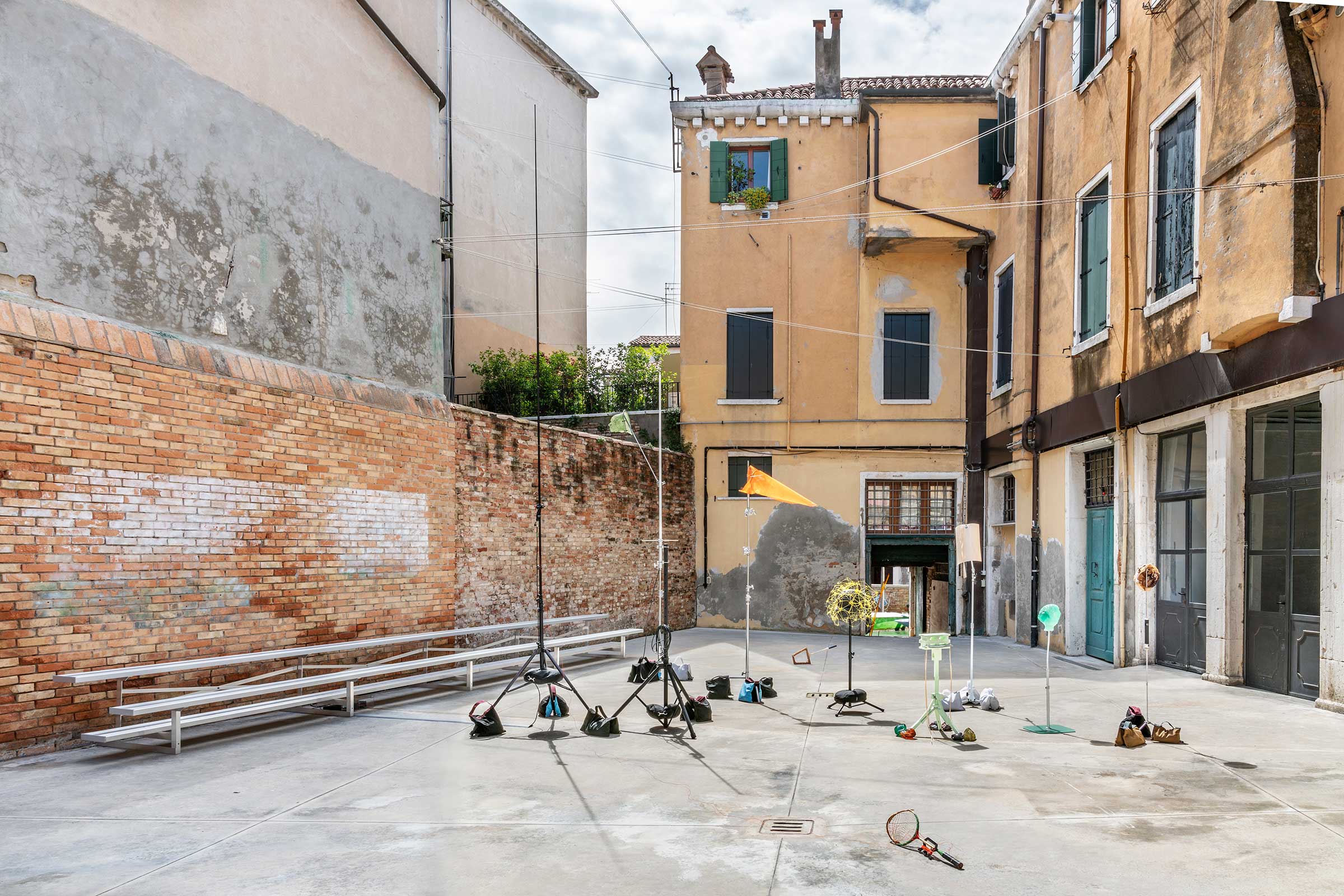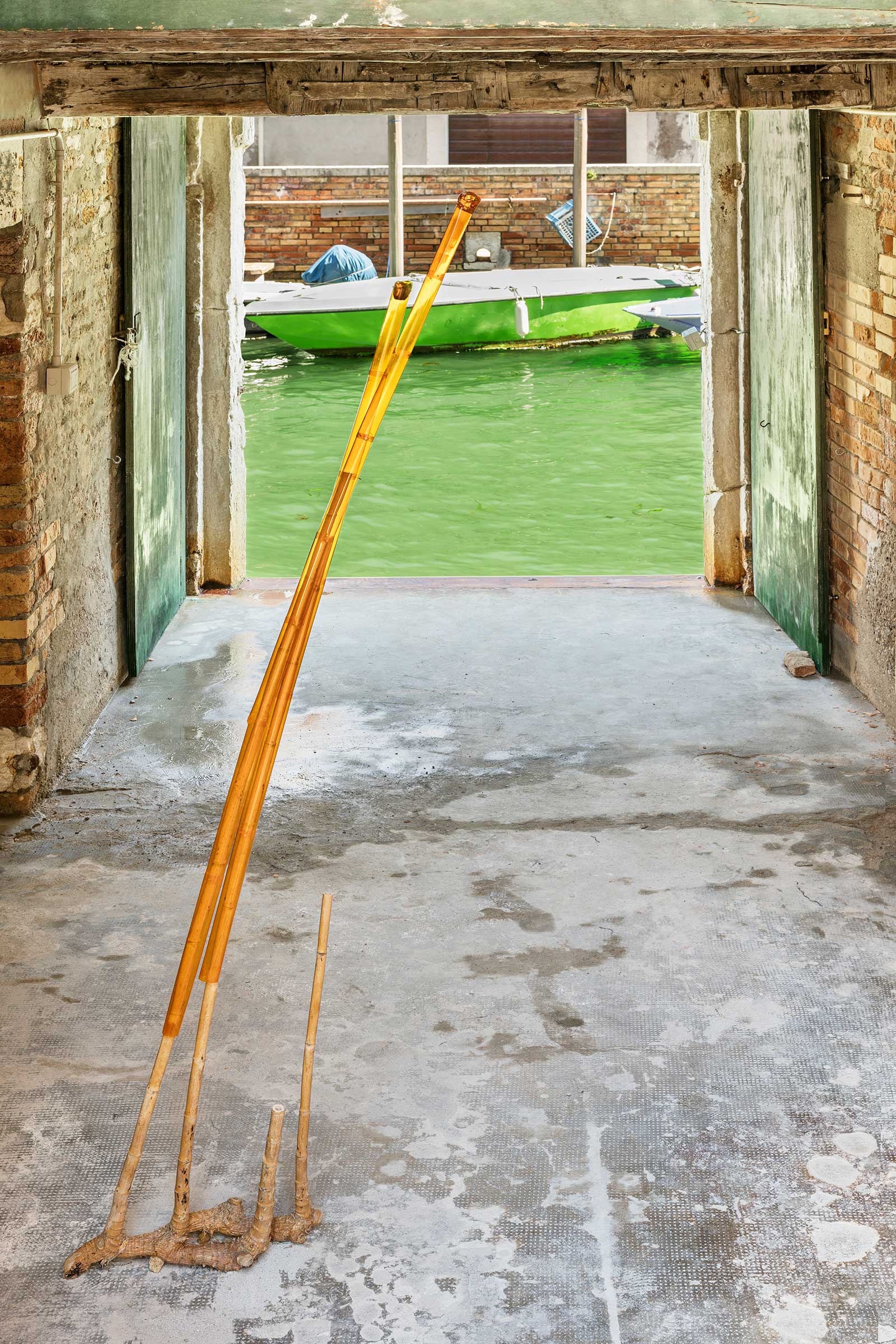Representing Hong Kong in Venice: In Conversation with Shirley Tse

We speak with the Los Angeles-based artist about her current installation at the Venice Biennale, a thought-provoking piece on negotiation and interdependency titled Stakeholders
Shirley Tse with Negotiated Differences at Shirley Tse: Stakeholders, Hong Kong in Venice, 2019. Image by Ela Bialkowska, OKNOstudio. Courtesy of M+ and the artist
Design Anthology: The negotiation between people and space is at the heart of Stakeholders; can you explain what this negotiation entails, and how ideas of affect, empathy and ethics fit into it?
Shirley Tse: While ‘negotiation’ is a term we often hear used in business and politics, I use it in reference to everyday life, where actions bear consequences upon each other. My work offers a model of multidimensional thinking. It points to non-predetermined actions through interdependency and play, all of which contribute to my current engagement with the idea of negotiation.
You conceived Stakeholders as ‘a space to reflect on how we can come to terms with the unforeseen actions that define our relationships with one another.’ Can you explain how you envision Negotiated Differences and Playcourt becoming these spaces?
The installations are foregrounding the philosophical understanding of how differences come together as a dynamic event, which is non-predetermined.
You’re known for working primarily with plastics and investigating the concept of ‘plasticity’. Why did you choose to add wooden forms / elements in Negotiated Differences?
I choose materials for semiotic, philosophical and cultural reasons. I’ve moved away from using plastic as a material and into the idea of plasticity as heterogeneity. Most recently I’ve been using a variety of different wood species that are turned and hand-carved. Wood and metal are combined with plastic to produce the filament used for the 3D-printed elements. I’m using new methods to make the work, combining new and old technologies, as well as natural and synthetic materials.
Negotiated Differences incorporates common objects like bowling pins and handrails with more abstract objects. What does this combination of recognisable and abstract objects signify?
Combining recognisable and abstract objects is an example of how differences enter into negotiation with each other.
“Artists are living and working across boundaries of nationality... I’ve made myself comfortable being where I am, and I don’t feel the need to fit into any category.”
In another interview, the exhibition’s guest curator Christina Li was quoted as saying, ‘I want us to think about Hong Kong art without being restricted to where the artists physically live.’ Being the first overseas artist to represent Hong Kong in Venice, what are your thoughts on this position?
Artists are living and working across boundaries of nationality. When I’m in America, I’m not considered an American artist. But outside America, I’m sometimes described as an American artist, sometimes a Los Angeles artist and sometimes a Hong Kong artist. I’ve always inhabited the interstitial and the liminal. Hong Kong, my birth place, is not quite British nor Chinese. I’ve made myself comfortable being where I am, and I don’t feel the need to fit into any category.
How has your upbringing in Hong Kong influenced your practice?
I grew up during the former colonial era, where independent thinking was not encouraged. It was not until I studied overseas that I realised that art is the best way to combat social conditioning and cultural confinement.
Significantly, you’re also the first female artist to represent Hong Kong at the Biennale — and someone whose work prominently deals with sculpture and space. Did these two factors play any role in your conception of Stakeholders?
I wouldn’t say that being a woman has had a bearing on my work. I’m thankful for my education, which instilled a strong belief in human rights. I’m happy to be in this extraordinary historical moment where people are taking action on gender inequality. And as a sculptor, the Venice venue gives me the opportunity to explore different installation strategies.
As told to / Simone Schultz
Playcourt, installation view of Shirley Tse: Stakeholders, Hong Kong in Venice, 2019. Image by Ela Bialkowska, OKNOstudio. Courtesy of M+ and the artist
Bamboo Extension, 2016, glass, bamboo, and plastic, 228.6 x 43.2 x 17.8 cm. Installation view of Shirley Tse: Stakeholders, Hong Kong in Venice, 2019. Image by Ela Bialkowska, OKNOstudio. Courtesy of M+ and the artist
Negotiated Differences (detail), carved wood and 3D-printed forms in wood, metal, and plastic, dimensions variable. Installation view of Shirley Tse: Stakeholders, Hong Kong in Venice, 2019. Image by Ela Bialkowska, OKNOstudio. Courtesy of M+ and the artist
Negotiated Differences (detail), carved wood and 3D-printed forms in wood, metal, and plastic, dimensions variable. Installation view of Shirley Tse: Stakeholders, Hong Kong in Venice, 2019. Image by Ela Bialkowska, OKNOstudio. Courtesy of M+ and the artist










